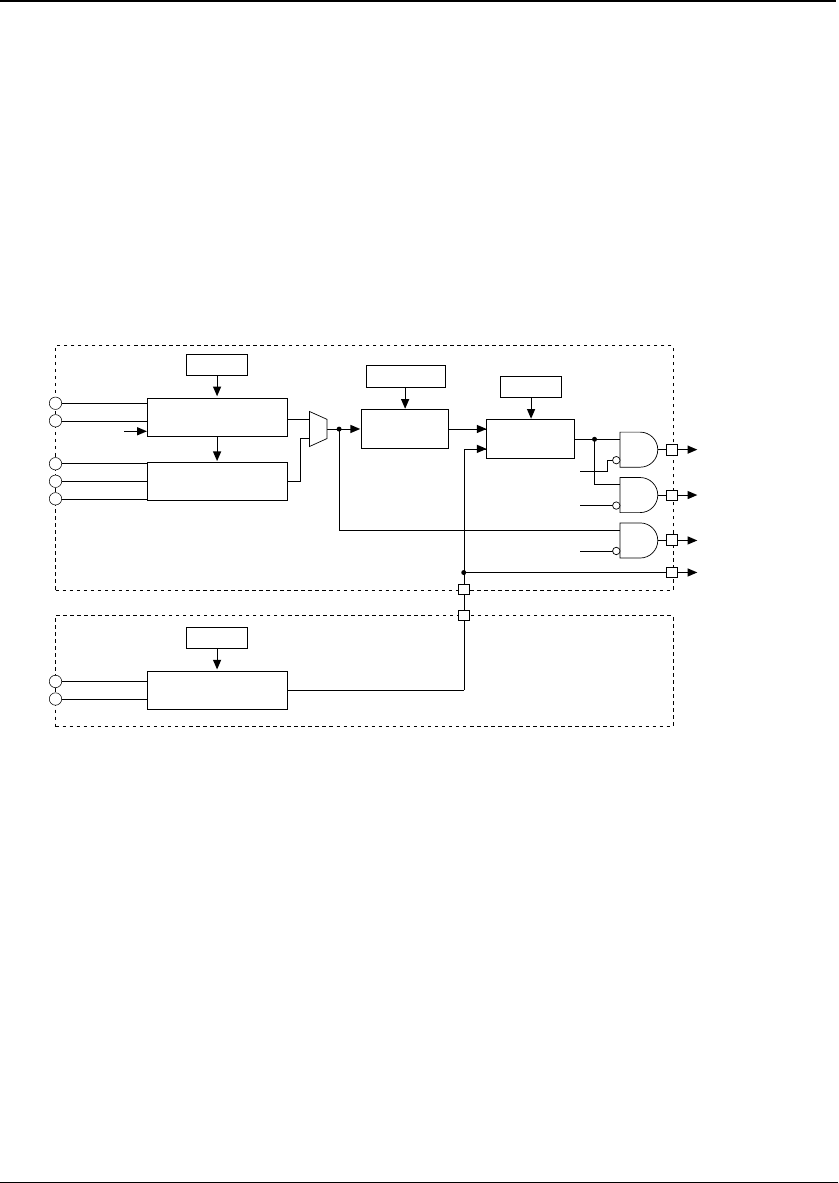
II CORE BLOCK: CLG (Clock Generator)
S1C33210 FUNCTION PART EPSON B-II-6-1
II-6 CLG (Clock Generator)
This section describes the method for controlling the system clock.
Configuration of Clock Generator
The C33 Core Block has a built-in clock generator that consists of a high-speed oscillation circuit (OSC3) and a PLL.
The high-speed (OSC3) oscillation circuit generates the main clock for the CPU and internal peripheral circuits (e.g.,
DMA, serial interface, programmable timer, and A/D converter).
Furthermore, the clock generator can input a sub clock, such as low-speed (OSC1, 32.768 kHz, Typ.) clock generated
by the Peripheral Block, for the clock timer and for operating the CPU at a low clock speed in order to reduce current
consumption.
Note: If a peripheral block that includes a low-speed oscillator circuit (OSC1) is included, the source clocks
for the CPU and the internal peripheral circuits (serial interface, programmable timers, A/D
converter, and other circuits) can be set to be either OSC3 or OSC1. For details, refer to "Setting
and Switching Over the CPU Operating Clock" in this section and "Prescaler" and "Low-Speed
(OSC1) oscillation circuit" of the Peripheral Block.
Figure 6.1 shows the configuration of the clock generator.
High-speed (OSC3)
oscillation circuit
Clock
switch
CLKCHG
To CPU
SLEEP
OSC3
OSC4
HALT, HALT2,
SLEEP
SOSC3
Oscillation ON/OFF
CLKDT[1:0]
Divider
1/1 to 1/8
To BCU and DMA
HALT2, SLEEP
To peripheral circuits
To peripheral circuits
and clock timer
SLEEP
PLL
PLLC
PLLS0
PLLS1
Low-speed (OSC1)
oscillation circuit
SOSC1
Oscillation ON/OFF
OSC1
OSC2
CLG
Peripheral Block
Figure 6.1 Configuration of Clock Generator
After an initial reset, the output (OSC3 clock) of the high-speed (OSC3) oscillation circuit is set for the CPU
operating clock.
When the low-speed (OSC1) oscillation circuit is used, the CPU operating clock can be switched to the output
(OSC1 clock) of the low-speed (OSC1) oscillation circuit in a program. Furthermore, each oscillation circuit can be
stopped in a program.
If the OSC3 clock is unnecessary such as when performing clock processing only, set the OSC1 clock for operation
of the CPU and turn off the high-speed (OSC3) oscillation circuit in order to reduce current consumption. In addition,
when SLEEP mode is set, the high-speed (OSC3) oscillation circuit is turned off, greatly reducing current
consumption (no internal units except for the clock timer need to be operated).


















